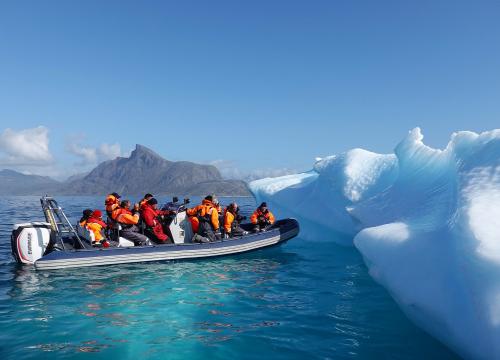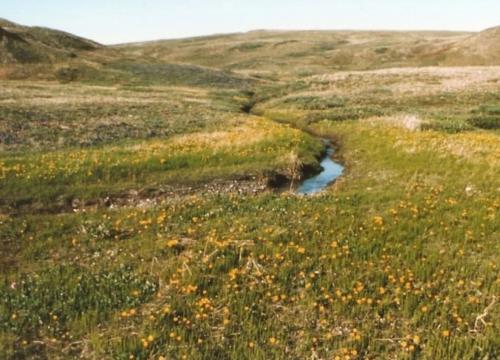In this webinar, Dr. Lincoln Pitcher presented on recent research about meltwater production, transport and export from the Greenland Ice Sheet. He talked about what glacier hydrology field research in Greenland is like, and why studying Greenland Ice Sheet hydrologic processes is important.
This webinar is part of the CIRES/NOAA Science-At-Home series.
Goals Header
About the Presenter
Lincoln Pitcher is a postdoctoral fellow at the Cooperative Institute for Research in Environmental Sciences (CIRES) at the University of Colorado Boulder. Lincoln is a hydrologist and glaciologist who uses remote sensing and field data to investigate how hydrologic processes impact the Greenland and Antarctic ice sheets.
Additional Learning Resources
Pre-K: Explore edible ice structures with frozen fruit in this activity from Science Friday. No two pieces of fruit turn out the same!
K-5: What do a polar bear, a bowhead whale and a jellyfish have in common? They are all part of the Arctic ecosystem! PBS learning has an online interactive to explore the creatures that live in the Arctic and how they all work together. Then make your own blubber gloves using plastic bags and shortening to investigate how animals that live in icy waters can keep themselves warm.
6-8: How do we know what we know about glaciers? This video from the Washington Post follows two scientists as they collect data to understand what is happening to Greenland's glaciers. Then use these activities from SeaGrant Alaska to explore what changing glaciers mean to the landscapes they travel over.
You can also take the Ice and Glaciers Quiz to see how much you know about the Earth's cryosphere and the changes that are happening there.
9-12: When you are ready to dig a little deeper, this visualization from PBS learning looks at the data that are collected about the Greenland Ice Sheet and what we can learn from them. There is also this video of two ice core data scientists from the University of Maine talking about how they do their work and what we can learn from it.
Then take a look at this video about how Inuit communities and researchers are collaborating to share knowledge. Why is it important for western scientists to include the perspectives of people who live in the communities they are studying?
And, just for fun, if you have ever wondered about the science and technique behind building ice sculptures? Science Friday has this video for you.
Did you notice that sea level rise viewer that Lincoln referenced? CLEANet.org walks you though how this tool can be a good classroom resource.
BONUS FEATURE! For those of you who were with us last week for Dr. Elizabeth Thompson's great talk, you are invited to learn more about oceans and ocean life with this Ocean Today's Full Moon Watch Party, taking place at noon, on May 7th (register and learn more here).


